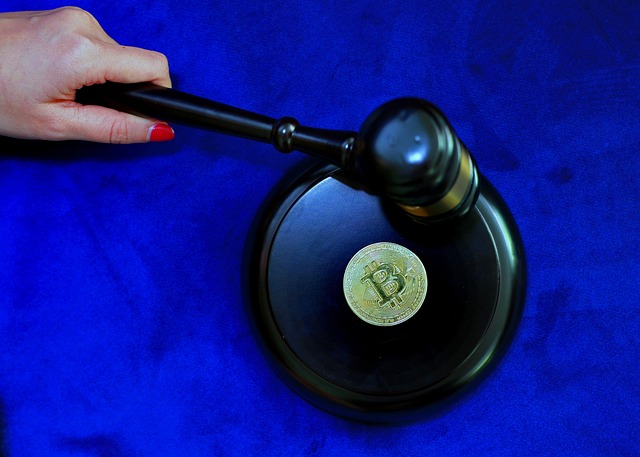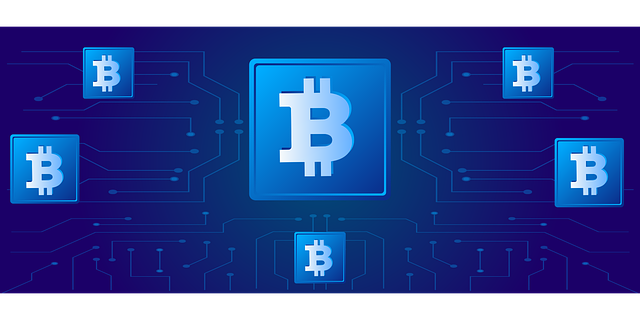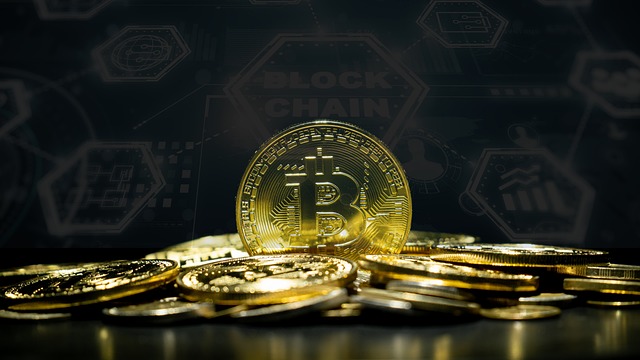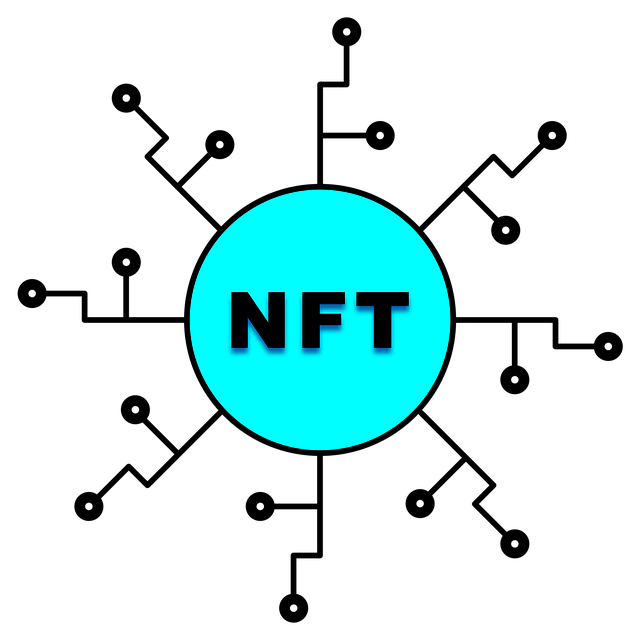Understanding Binance Crypto Trading Fees: Complete Guide
Author: Jameson Richman Expert
Published On: 2025-10-29
Prepared by Jameson Richman and our team of experts with over a decade of experience in cryptocurrency and digital asset analysis. Learn more about us.
Binance crypto trading fees can materially affect your profitability whether you're a day trader, swing trader, or long-term HODLer. This comprehensive guide explains how Binance calculates trading, margin, futures, and withdrawal fees; how VIP tiers, BNB discounts, and maker/taker pricing work; practical examples of fee calculations; and proven tactics to lower your costs. You'll also find comparisons with other major exchanges and links to resources for automating fee-efficient strategies.

Why Binance crypto trading fees matter
Fees are one of the few guaranteed costs traders face. Even small percentage differences compound over many trades and can turn a profitable strategy into a losing one. Understanding the full fee picture on Binance — not just the headline maker/taker rates but also funding, borrowing, conversion, and withdrawal fees — is essential to optimize returns and choose the right execution methods.
Overview: How Binance structures fees
Binance uses a multi-layered fee system that includes:
- Spot trading maker/taker fees
- Futures (perpetual and delivery) trading fees and funding rates
- Margin borrowing costs
- Options trading fees
- P2P, Convert, and OTC fee structures
- Deposit and withdrawal charges
Binance’s official fee schedule is the primary source for the most up-to-date numbers; see Binance Fee Schedule (official) for current rates and updates.
Spot trading: Maker vs. taker
On spot markets, Binance uses the maker/taker model:
- Maker orders add liquidity (limit orders placed off the book) and typically pay a lower fee.
- Taker orders remove liquidity (market orders or limit orders that immediately match) and usually pay a higher fee.
Base maker/taker fees vary by your 30-day trading volume (BTC-equivalent) and whether you hold BNB to receive discounts. Typical retail rates start at 0.10% maker / 0.10% taker for new accounts, with reductions for BNB pay and higher VIP tiers.
Futures fees (perpetual & delivery contracts)
Futures contracts have their own maker/taker schedule and additional costs to account for leverage, such as:
- Perpetual contract funding rates (periodic payments between long and short positions)
- Futures taker/maker fees that are typically lower than spot for high-volume traders
- Insurance fund contributions and liquidation fees in extreme cases
Futures fee schedules differ between USDT-margined and COIN-margined contracts; consult Binance Futures fees for exact figures.
Margin trading, P2P, Convert, and Options
Margin trading includes interest (borrow rates) that depend on the asset and duration. P2P trading often has zero or very low platform fees, while Binance Convert offers instant swaps with implicit spread costs rather than explicit fees. Options fees are typically a percentage of premium and depend on the product.
Deposits and withdrawals
Most crypto deposits are free, but withdrawals incur network fees (miners’/validators’ fees) and sometimes an extra platform fee. Withdrawal fees vary by blockchain and token — for example, withdrawing BTC is more expensive than USDT on a low-fee chain. Always check the current fee before withdrawing; fees change with network congestion.
How VIP tiers and rebates work
Binance uses a VIP tier system based on 30-day trading volume and BNB balance. Higher VIP levels grant lower trading fees and sometimes rebate programs or special access. The tiers typically start at VIP 0 and go up to VIP 9 (or more for institutional arrangements). Criteria include:
- 30-day trading volume (tracked in BTC equivalent)
- BNB balance held in your account
As you progress, maker and taker fees drop — often significantly for high-volume traders. Institutional and OTC clients can negotiate bespoke fee schedules as well.

BNB fee discounts: How to save if you hold Binance Coin
One of the most well-known ways to lower Binance crypto trading fees is to pay fees with BNB (Binance Coin). When enabled, a percentage discount is applied to trading fees paid with BNB. Historically, the discount rate has changed over time, so verify the current discount on Binance's fee pages. Holding a minimum amount of BNB may also help you qualify for certain tiers or promotional offers.
Fee calculation examples
Seeing numbers concretely helps. Below are practical scenarios to show how trading fees affect returns.
Example 1: Spot trade (small retail)
Assumptions:
- Trade: Buy 1 ETH at $3,000 and sell at $3,100
- Spot taker fee: 0.10% each side (maker/taker example simplified)
- No BNB discount
Costs:
- Buy fee = $3,000 * 0.001 = $3
- Sell fee = $3,100 * 0.001 = $3.10
Total fees: $6.10. Profit before fees: $100. Net profit: $93.90 — fees reduced gross profit by ~6.1%.
Example 2: Futures long with leverage
Assumptions:
- Perpetual contract position size = $10,000
- Leverage = 10x (so margin required = $1,000)
- Futures taker fee = 0.02% to open and close (example)
- Funding cost = variable
Costs:
- Open fee = $10,000 * 0.0002 = $2
- Close fee = $10,000 * 0.0002 = $2
Total fees = $4 + potential funding costs. Because leverage magnifies P&L, the relative impact of fees on margin can be larger (fees calculated on notional not on margin)
Comparing Binance fees with other major exchanges
When choosing an exchange consider fee structure, liquidity, security, and product offering. Here’s a quick comparison with popular alternatives. For account registration, many exchanges offer referral bonuses — below are links to some big platforms:
High-level notes:
- MEXC: Competitive maker/taker fees for spot and derivatives, frequent promotions for new users.
- Bitget: Known for copy trading and futures, with incentives and tiered discounts for futures traders.
- Bybit: Very competitive derivatives fees and deep liquidity in many perpetual markets.
Always compare real numbers for the exact pairs and volumes you trade. Low headline fees are useful only if the exchange has sufficient liquidity and order-book depth to execute your strategy efficiently.

Advanced considerations: funding rates, slippage, and spreads
Fees are not the only hidden cost. Advanced traders must account for:
- Funding rates on perpetuals — periodic payments between longs and shorts that can add up over time.
- Slippage — the difference between expected and executed prices, especially on large market orders or thinly traded pairs.
- Spread — the market bid-ask difference; market makers may earn the spread but takers pay it implicitly.
These factors can exceed written fees in cost. Placing limit (maker) orders and trading during peak liquidity windows reduces slippage and spread costs.
How to reduce Binance crypto trading fees (actionable tactics)
Below are proven tactics traders use to minimize overall costs:
- Pay fees in BNB — enable BNB fee payment to receive a discount (verify current discount rate).
- Use limit orders where possible — become a maker to earn lower fees or even rebates in some markets.
- Increase 30-day volume or hold BNB — reach higher VIP tiers for tiered fee reductions.
- Use referral links or promotions — new-user promos often provide trading fee credits (be mindful of terms).
- Trade high-liquidity pairs — less slippage and tighter spreads reduce implicit costs.
- Leverage OTC desks for large trades — for very large orders, OTC trading can reduce market impact and fees.
- Automate smart order routing — trading bots can split orders across exchanges to achieve best execution; learn how in our trading bot guide.
For a deep dive into building automated strategies and bots that can optimize execution and fees, see our comprehensive bot guide: Build a Crypto Trading Bot in 2025 — The Ultimate Deep-Dive Guide for Automated Cryptocurrency Trading.
Using market makers and liquidity providers
If you trade institutional-sized blocks or require guaranteed liquidity, working with market makers can lower execution costs. Market makers provide tighter spreads and can offer rebates or negotiated fee schedules. Learn which firms lead the space and how to engage them in our breakdown of top liquidity providers.
For more on market makers and how they affect fees and liquidity, read Top Crypto Market Makers 2024 — Leading Liquidity Providers and How to Use Them.

Automation and bots: reduce fees via smarter execution
Trading bots and smart order routers can reduce fees by:
- Splitting large orders into smaller slices to limit slippage
- Routing orders to venues with the best combination of price and fee
- Timing trades during high liquidity windows or favorable funding periods
Automating fee-optimized strategies requires technical skill and rigorous backtesting. If you're serious about automation, follow a reliable implementation guide — see Build a Crypto Trading Bot in 2025 for technical and strategic details.
Practical checklist: Prepare before you trade
- Verify current Binance fee schedule and VIP level thresholds on the official Binance fee page.
- Decide whether to enable BNB fee payments and ensure sufficient BNB balance.
- Test limit vs market orders in a small-size trade to measure slippage.
- Use calculators or spreadsheets to model fees over expected trade frequency and size.
- Compare fees and liquidity across alternative venues like MEXC, Bitget, Bybit and consider registering for trial funds or promotional credits via referral links above.
Regulatory, safety, and tax considerations
Lower fees should not be the only criterion. Consider:
- Regulatory compliance: Exchanges vary by jurisdiction. Some products may be unavailable due to local rules.
- Security and custody: Higher liquidity and larger fee discounts don’t matter if the exchange has weak security practices.
- Tax reporting: Fees can often be used to reduce taxable gains (consult a tax professional). Keep records of trading fees, funding payments, and withdrawals for accurate reporting.
For background on Binance’s history and standing, consult the Binance page on Wikipedia for a high-level overview.

Common questions about Binance crypto trading fees (FAQ)
Are Binance fees the lowest?
“Lowest” depends on trading volume, product type, and whether you use BNB or a VIP tier. For many retail users, Binance’s fees are competitive, especially when paying with BNB. However, specialized derivatives or institutional programs at exchanges like Bybit, Bitget, or MEXC can beat Binance for specific products or volumes. Always compare fees for your specific use case and the liquidity available for your trading pairs.
Do I always save by paying with BNB?
Historically yes, but the discount changes. Check the current discount rate and evaluate whether the benefit outweighs the risk/exposure of holding BNB in your account.
How do withdrawal fees work?
Withdrawal fees are generally set per token and per blockchain network and reflect network validator costs. Some tokens on certain chains have low fees (e.g., stablecoins on low-cost L2 networks), while BTC withdrawals typically have higher fees that fluctuate with chain congestion.
Are funding payments considered fees?
Funding payments are a financing cost on perpetuals rather than a platform fee, but they are a real trading cost and should be included when calculating profitability for leveraged positions held across funding periods.
Real-world example: trading costs over a year
Consider a moderately active trader executing 500 round-trip spot trades a year with an average trade value of $2,000. If average taker fee is 0.10% without BNB and the trader uses market orders for half the trades:
- Total traded notional per year = 500 * $2,000 = $1,000,000 (round-trip = both buy and sell included)
- Fees at 0.10% per side = $1,000,000 * 0.001 = $1,000 in fees
- If switching half the trades to limit maker orders (0.02% maker fee) and enabling BNB discount, fees might drop by 30–70% depending on discounts — potentially saving hundreds to thousands annually.
Small behavioral changes—use of limit orders, BNB discounts, smarter order timing—add up for active traders.
Long-term strategies and macro outlook
For long-term investors, trading fees are typically a minor drag compared with asset performance, but withdrawal and conversion fees can still be relevant. If you rebalance regularly, fee-efficient execution becomes important. For broader long-term planning and sentiment reads that might affect trading behavior (for example, projecting bitcoin price moves to 2030), see commentary on market scenarios and investor sentiment in this analysis of Bitcoin price expectations.
Understanding macro expectation helps determine whether short-term trading (incurring fees) or long-term holding (lower fee frequency) better fits your objectives: What Will 0.1 Bitcoin Be Worth in 2030? — Realistic Scenarios and Reddit Sentiment Explained.

Authoritative resources and further reading
- Binance Fee Schedule (Official) — primary source for current fee numbers.
- Binance — Wikipedia — historical and structural overview.
- Maker-Taker Fee Model — Investopedia — explanation of fee models used across exchanges.
- Top Crypto Market Makers 2024 — Liquidity Providers — how market makers affect spreads and fees.
- Build a Crypto Trading Bot in 2025 — Guide — automation to improve execution and reduce fees.
- Bitcoin 2030 Scenarios & Reddit Sentiment — long-term perspective.
Final checklist: Lower your Binance trading costs today
- Confirm current maker/taker and futures fees on Binance’s official pages.
- Enable BNB fee payment if the discount benefits your strategy.
- Prioritize limit orders and trade during peak liquidity to reduce slippage.
- Consider VIP tier targets if you trade large volumes consistently.
- Use automation and smart order routing for large or frequent trades (see the bot guide).
- Compare rates and liquidity across exchanges like MEXC, Bitget, and Bybit and use referral registration links to access promotions.
Understanding and optimizing Binance crypto trading fees is a mix of knowing the fee schedule, selecting the right order types, using discounts like BNB, and sometimes leveraging bots and market makers for best execution. Fees alone shouldn’t dictate your exchange choice, but they are a critical piece of the profit equation. Use the resources above to dig deeper and run your own fee models based on your trading patterns.